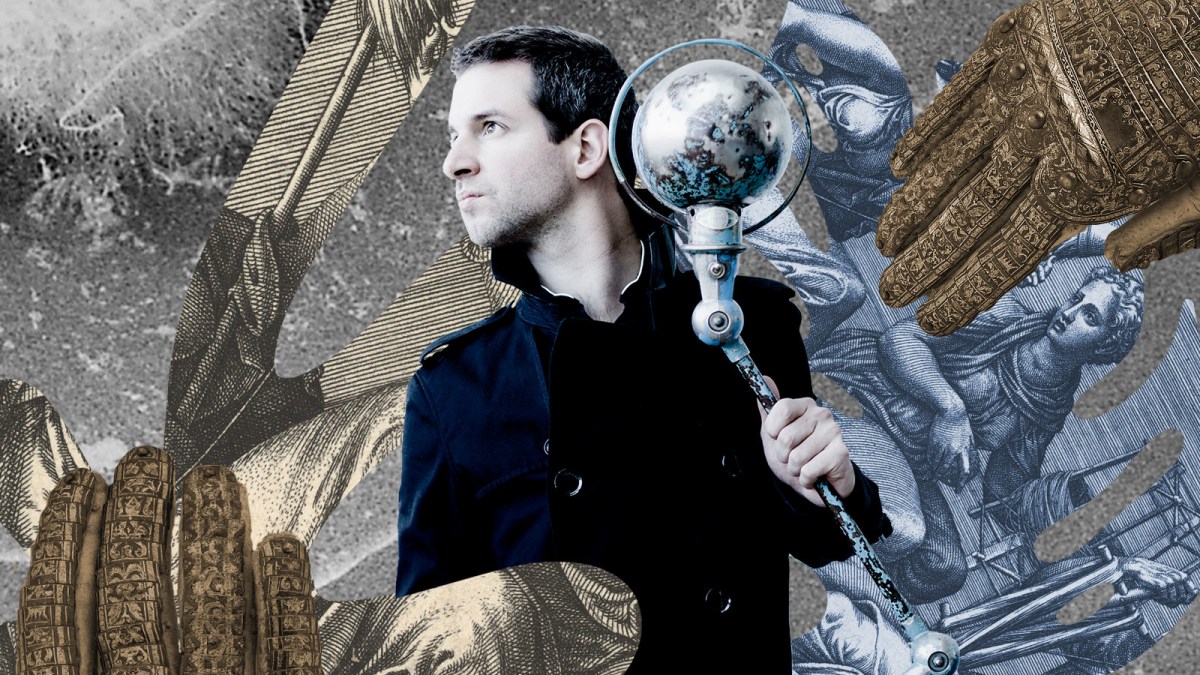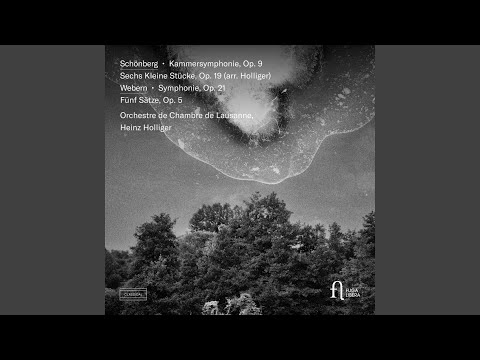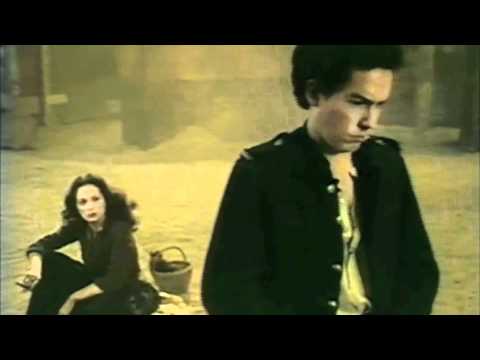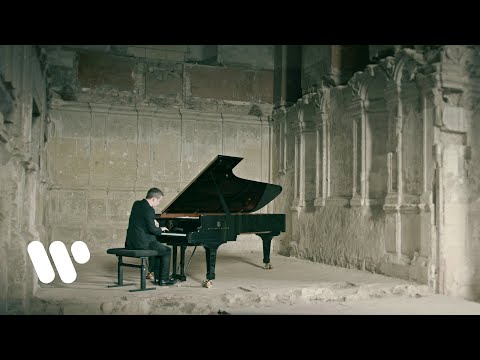- Orchestre de Chambre de Lausanne, Heinz Holliger: “Schönberg: Kammersymphonie Op. 9, Sechs Kleine Stücke, Op. 19; Webern: Symphonie, Op. 21, Fünf Sätze, Op. 5” (Fuga Libera)
- Zehava Gal, Laurence Dale, Veronique Dietschy, Carl Johan Falkman, et. al. “La tragédie de Carmen”
- Bertrand Chamayou: “Messiaen: Vingt Regards sur l’enfant Jésus” (Erato)
“I can take any empty space and call it a bare stage,” wrote iconoclastic theater and opera director Peter Brook in his seminal 1968 manifesto, The Empty Space. Brook, who died on July 2, wasn’t just talking about physical space. He was also referring to the space between words and silence, between stillness and action, between audience and performer. Each space was, for Brook, a Large Hadron Collider that could be used to explore the unresolvable questions. As the writer Justin Sherin eulogized over the weekend, “In a business that loves nothing more than a good ‘mission statement’ and conflates that which thinks it can save the world for art, Peter Brook’s work grew entirely from belief in the mysteries of humanity and doubt about how to render them.”
I have no idea whether Brook crossed paths with Arnold Schoenberg (a question Google seems to find unresolvable), but at the very least the two were working in the same lab. Much like Brook, Schoenberg didn’t grow up in a musical family, but rather a Jewish immigrant one. He was mostly self-educated as a musician, adapting a viola with zither strings to teach himself cello. Along with two friends and fellow travelers, he formed an amateur trio that gave him a crash course in chamber music. His Grove biographer, Oliver Neighbour, adds that “Schoenberg and his friends heard very little music except what they could play themselves.” As he grew into a musical career, studying and working with Alexander von Zemlinsky, teaching private students (including a young Alban Berg), and borrowing cash from Gustav Mahler to make rent, Schoenberg’s own works started upending the conservative Viennese music scene.
One premiere even merited its own “Rite of Spring”-style Wikipedia entry. Led by Schoenberg himself, the Skandalkonzert featured works by Zemlinsky and Webern, along with the conductor’s own Chamber Symphony No. 1. As the name suggests, it did not go down well. (A favorite line from the Wikipedia entry, referring to concert organizer Erhard Buschbeck slapping an audience member: “Operetta composer Oscar Straus, a witness to the alleged assault, testified that the slap had been the most harmonious sound of the evening.”)
All of this is the stuff of firebrand legend, but the sparks of braggadocio and bravado obscure the heart of Schoenberg’s Chamber Symphony, which seems more concerned with rendering the mysteries of humanity than it does in generating publicity (some have argued that the true scandal of the Skandalkonzert was that much of it may have been staged for publicity). The work begins as if mid-thought in a dialogue between strings and winds. Lines are echoed, as if the woodwinds were nodding in assent to a point made by the violins. Sidebar discussions break off. The conversation at times turns circular, Talmudic in its inability to find one categorical answer to the question. At times, the original question itself seems up for debate. While Schoenberg’s reputation as an enfant terrible was cemented with this concert, the structure of his Chamber Symphony is remarkably classical: While it’s played as one movement, it’s still rooted in a traditional four-movement structure.
Leading the Orchestre de Chambre de Lausanne, Heinz Holliger is happy to linger in these contradictions, highlighting them rather than ignoring them to make a more conclusive point one way or the other. Perhaps part of this owes to the circumstances in which this was recorded: in February 2021, during the second major lockdown in Switzerland. This in-between state likely afforded the orchestra members and conductor the sort of empty space needed to create a stage ideal for Schoenberg’s incongruities and cryptograms; a space between time and no-time, a space between normalcy and whatever these last two-and-a-half years have been. This sense of mystery and doubt comes up in the liner notes, which equates both the Chamber Symphony No. 1 and Schoenberg’s “Sechs Kleine Stücke” (which round out the album along with Webern’s Symphony and “Five Movements for String Quartet”) with a quote from the composer: “Art is a cry of distress from those who live out within themselves the destiny of humanity.”
It’s the sort of aphorism you’d expect Brook to make. The news of his death led me to turn back to his “La tragédie de Carmen,” an adaptation of Bizet’s “Carmen” rendered as a chamber play. Originally premiered in 1981 at Paris’s Théâtre Bouffe du Nord, Brook’s “Tragédie” was, as the director saw it, “an investigation” of Bizet’s original work. “What we have done is to separate its central core from the rest of the material, like boning a fish.” Gone are the choruses of soldiers, cigarette girls, and children. Likewise excised are the comprimario characters like Frasquita and Mércèdes, the subplot about smuggling, and the bombastic overture (it begins, instead, with a solo cello playing Carmen’s Act III “Card” Aria). This stripping down process renders the work more like chamber music than grand opera. Carmen’s “Habanera” is delivered against a somewhat sinister solo timpani tapping out the aria’s famous rhythm—and serves as both invitation and warning, delivered solely to José.
Likewise, Escamillo’s “Chanson du Toréador” is unadorned both musically and visually: He arrives at Pastia’s tavern, where José has just killed Zuniga in a fight over Carmen, his self-praise making him oblivious to the dead body that his three living drinking companions are hiding in plain sight. (This expedites the Act III fight between Escamillo and José as a lead-in to José’s “Flower Aria,” sung as Carmen services Escamillo in an upstairs room and delivered with the intensity of a prayer.) The familiar overture finally shows up in the last act, a prelude to Escamillo’s round in the bullring, and its orchestral grandeur soon gives way to a solo piano line that at first sounds like a saloon musician underscoring a fight as it plucks out the fate motif in Bizet’s score, before transitioning smoothly into the Carmen-Escamillo duet. Hearing the toreador sing “Si tu m’aimes” in this setting makes the line sound more like a tragic Schubert lied than the bravado of an unstoppable master. This, too, serves as a bit of dramatic foreshadowing: In Brooks’s “Carmen,” Escamillo is impaled by the bull, his corpse carried in from the ring, interrupting José and Carmen’s final showdown. They walk off, dazed, to the timpani rhythm of the “Habanera.” Carmen’s death plays out against this melody, an almost shocking act that comes as if out of nowhere, if we didn’t know how the plot was designed to go. All four main characters live out within themselves the destiny of humanity.
The effectiveness of Brook’s vision comes through in the soundtrack for one of his three filmed adaptations of “La tragédie de Carmen” (each playing out to more or less the same staging and design). Without any of these visuals, the score could easily fall apart as a conceptual bricolage. Yet Brook turned the empty space between recorded music and listener into its own stage to render the drama as delivered by the music. As Carmen, Zehava Gal’s voice is mercurial; creamy at the top, and almost fragile in delivery, but with a compelling pathos and at times acerbic edge. I’m not sure what a cello made out of a viola body and zither strings would sound like, but I wouldn’t be surprised if it sounded a bit like her. As José, Laurence Dale (himself now a director) is well-paired with Gal’s mezzo, his tenor like a barely frozen-over lake, the depths just visible below the surface. His is a slow-burn José who skates gently yet fluidly over the ice until the cracks become inevitable and his character goes entirely, and quietly, to pieces.
The latest from VAN, delivered straight to your inbox
Bertrand Chamayou brings a similar sense of mystery, fate, and doubt to another new recording, one centered on Olivier Messiaen’s evening-length “Vingt regards sur l’Enfant-Jésus.” Some of this work’s haziness, however, seems to come down to autobiography: While Brook was excused from military service due to a health condition and Schoenberg had fled post-Anschluss Vienna for the safe haven of Los Angeles, Messiaen served the French army in World War II. If you know one detail of his life, it’s likely of his time spent in a Nazi POW camp between 1940 and 1941, during which time he composed the “Quatuor pour la fin du temps” for himself and three fellow inmates.
What happened afterward, however, had a similar impact on Messiaen’s compositions. Released in the spring of 1941, Messiaen returned to what was now an occupied Paris. At the end of the war, his first wife, Claire Delbos, went in for a routine surgery that left her with bouts of amnesia and erratic behavior that threw an otherwise passionate marriage into deterioration (Claire eventually entered a sanatorium where she lived until her death in 1959). At the same time, Messiaen had been hired as a teacher at the Conservatoire, where he encountered the iconoclastic piano student Yvonne Loriod. He soon began writing works for her, including the fiendishly difficult “Vingt regards,” 20 portraits of Jesus’s infancy.
While authoring many theologically-focused works, Messiaen eschewed being labeled as a mystic—he was no George Gurdjieff, offering spiritual teachings through his music. He may have composed with an aim towards communion, in both the metaphoric and Catholic sense of the word, but his works were delivered as a messenger rather than a pontiff. That said, the sacred mysteries of faith were some of the themes he returned to time and again throughout his career: the nuance of transubstantiation, the nature of the holy Trinity, and the notion of resurrection. “The drama of my life is that I have written religious music for an audience that has no faith,” he once quipped.
It’s hard to find a work by Messiaen that doesn’t reflect these fixations, but “Vingt regards”—with its ability to both stretch wide with its iterations on the early life of Jesus and deep by focusing these meditations entirely on the solo piano—is an especially vivid case study. Chamayou ushers in the work’s beginning, “The Contemplation of the Father,” softly, yet steadily; a somnambulistic pacing nestled in the quiet of the midnight hours. Much like Schoenberg’s Chamber Symphony, the contemplation becomes circular, the same ideas held like rocks in order to feel their weight and potential. Messaien then cuts into this with the second movement, “The Contemplation of the Star,” a comet of chords blasting in like a supernova. It’s the chiaroscuro between these passages of light and dark, of breakneck speed and methodical plodding, that fills in the shades of what Chamayou describes as a “giant fresco.”
It helps that Chamayou has spent more than three decades obsessed with the work; one he first heard at age nine, and one he first played in 2008 (at the age of 27) for Messiaen’s centennial. Since then, Chamayou has had time to go back to the pieces time and again, as if it were its own sacred text whose merit exists in interpreting and reinterpreting over time. Even in the most joyful moments of the score, there is a reserve of doubt, the known-unknowns. Even as Chamayou reaches the end, it feels incomplete—by the composer’s design. I can’t wait to hear what his interpretation is like in another 30 years. ¶
Subscribers keep VAN running!
VAN is proud to be an independent classical music magazine thanks to our subscribers. For just over 10 cents a day, you can enjoy unlimited access to over 875 articles in our archives—and get new ones delivered straight to your inbox each week.
Not ready to commit to a full year?
You can test-drive VAN for one month for the price of a coffee.





Comments are closed.